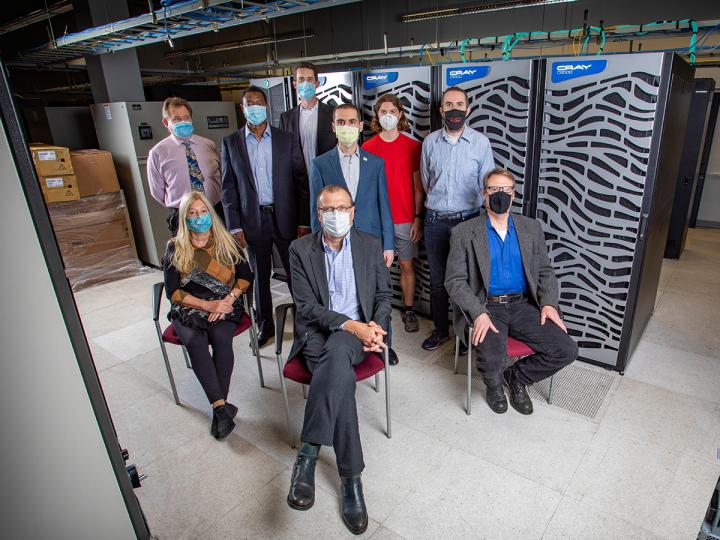The Ookami computer is available to researchers nationwide as a testbed for high-performance computing technology

Credit: Stony Brook University
STONY BROOK, NY, November 13, 2020 – The Institute for Advanced Computational Science (IACS) at Stony Brook University has installed a computer system employing the same processor technology as the fastest and most power efficient supercomputer in the world, the Fugaku system at the RIKEN Center for Computational Science, in Japan. The new computer is named Ookami (wolf in Japanese) and is run by IACS in partnership with the Center for Computational Research at the University at Buffalo.
Ookami is one of the first computers outside of Japan to be powered by the HPE Apollo 80 system, which was originally developed by Cray and Fujitsu, and uses the Fujitsu A64FX processor.
The ARM-based processor includes multiple innovations integrated with very fast, low-latency memory that together make it easier for science and engineering applications to reach both high performance and high power efficiency, therefore “greener” technology.
Ookami will also use the Cray ClusterStor E1000 storage system from Hewlett Packard Enterprise (HPE), which utilizes tailored software and hardware features, to meet high-performance storage requirements of any size and supports Ookami’s ongoing data growth.
“This system has a nearly magical combination of programmability, performance, and efficiency, with the potential to transform computational research in many areas of science, engineering, and industry,” says Robert Harrison, PhD, Professor of Applied Mathematics and Statistics and Director of the IACS. “Ookami is a resource for researchers in academia or industry nationwide. Its use opens the door for researchers to explore new computing technologies that could greatly impact the future of high-performance applications.”
“We are committed to expanding high-performance computing capabilities by developing flexible systems that can support new, diverse architectures such as with the HPE Apollo 80 using Fujitsu’s A64FX processor, purpose built for HPC,” said Bill Mannel, vice president and general manager, HPE. “We are honored to empower Stony Brook University’s mission to test new technologies that will accelerate a path of innovative HPC technologies, including a roadmap to exascale.”
Bright Cluster Manager software reduces the burden of building and managing high-performance Linux clusters, eliminating complexity, and enabling flexibility. As a longtime user of Bright Cluster Manager, Stony Brook has been able to leverage the skills they have already invested in to efficiently deploy and commission this new HPE platform.
“Bright Computing has a long history of working with Cray on state-of-the-art supercomputers, and we are delighted to continue this under the new merge with HPE. Our engineers have worked closely with Fujitsu’s A64FX-based development team to ensure Bright Cluster Manager seamlessly manages A64FX-based systems like the HPE Apollo 80 in the same way we manage traditional intel-based servers. We are proud to play our part in bringing all these technologies together for our valued customer, Stony Brook,” says Lee Carter, VP Alliances at Bright.
###
Ookami is supported by the National Science Foundation Office of Advanced Cyberinfrastructure (grant #1927880).
Interested users should contact IACS at [email protected].
Media Contact
Greg Filiano
[email protected]




